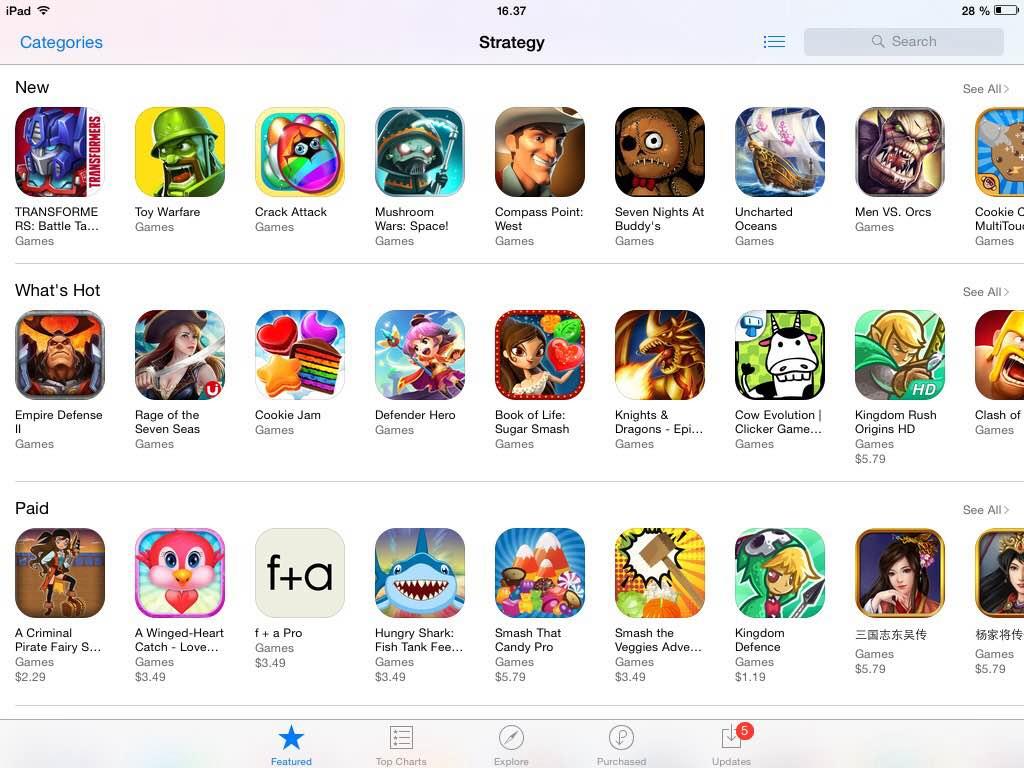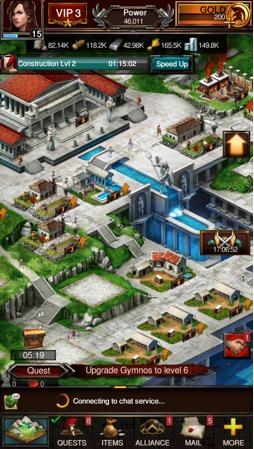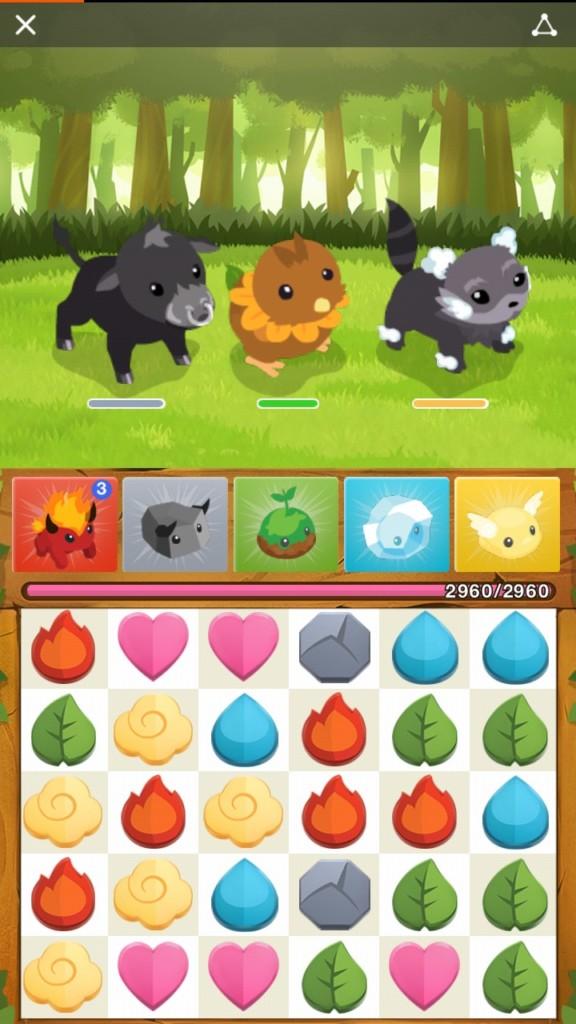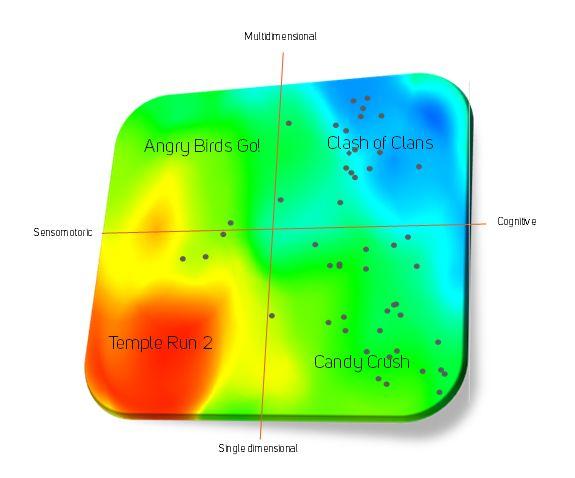The global mobile game industry is booming like no other. A horde of 500 000+ titles is inhabiting Appstore alone, and new recruits are tagging along at an exponentially growing pace. When your own masterpiece takes its first wobbly steps this environment, it will have thousands of close cousins fighting for the attention of the same players. That’s an unfortunate fact, no matter how unique you think your game is.
The natural strategy here is, of course, to try to make a game that appeals to your target audience AND at the same time stands out from the crowd of similar games. But how do you know exactly, on what kind of a competitive field your game is entering and which games are fighting over the same players as your title? More importantly, what exactly is your target audience and what does it want?
OFFICIAL GAME CATEGORIES GO ONLY HALF THE WAY
The usual way to identify your game’s target group is to use game categories. If you are making an RPG game, you check out the best performing RPG games in your market, analyze them and try to learn their strengths and weaknesses. It’s only natural because you aim to please RPG-enthusiasts, your target group, right? Well, you can surely have some success with that logic, but you are also severely narrowing your view and creating unnecessary blind spots. And these blind spots can cost you a lot of potential gamers and daily revenue.
The traditional way of categorizing games has been around since the last century and we have grown to accept it as the laws of physics – it has been an accurate way of depicting our surrounding universe. Puzzle games, strategy games, RPG’s, beat ‘em ups…this list has remained quite static to this day. Unfortunately, the universe of games is not a static one, and the old rules don’t apply to today’s mobile game markets very well.

Of course, we still have lots of games that slide smoothly to those old molds: Candy Crush Soda is a puzzle game in its purest form and Clash of Clans can be fitted to the strategy genre without too much controversy (as far as mobile strategy games go). But how about Puzzle & Dragons? Would you throw it into puzzle or RPG basket? And how does the game’s hybrid nature affect its competitive landscape and focus group? As these kinds of “crossovers” have become increasingly common in today’s mobile game markets, we need to develop a new approach to define game types, as the traditional categories are simply not enough.
So to gain a better and more comprehensive understanding of a game’s true nature, closest competitors and target group, you should ask yourself…
1. WHAT SKILLS MY GAME TEACHES?
A new point of view to the issue of game types, target audiences and competitive environment can be found at the very core of a game’s anatomy. By mapping the primary skills games “teach” to the player, you start to get a grasp of the fundaments that actually help you to define and differentiate games in a new, functional way. For example, strategy and puzzle games emphasize cognitive skills, such as tactical thinking, puzzle solving and pattern detection. Endless runners and shooting games on the other hand have emphasis on sensory and motoric (“sensomotoric”) skills like reaction, speed and aiming.
By defining the spot where your game stands on this sensomotoric – cognitive axis, you can get a more accurate picture of your primary competitors and target group. Now you are focusing not only on the narrow RPG genre, but also on other cognitive games with an emphasis on tactical thinking, resource allocation, and long-term planning. Suddenly your view of possible competitors and target groups has broadened significantly, enabling you to think outside the box when planning the different feature-sets of your next title.

But this one spectrum alone is not enough, as mobile games are often quite multifaceted and complicated beings. To create an even more comprehensive way of categorizing games, we can extend this view we just established by asking…
2. HOW MANY CORE LAYERS MY GAME HAS?
Game developers often use terms “casual”, “mid-core” and “hardcore” to define the nature and focus group of their games. But what exact features make your game becoming a casual or mid-core RPG? Again, the answer lies in the basic fundaments and mechanics of the game.
By analyzing the core layers and features of various games, we can distribute them along a single-dimensional – multi-dimensional spectrum. Single-dimensional (SD) games have only one core layer and set of tasks, whereas multi-dimensional (MD) games consist of two or more core layers.
To give you an illustrative example, Candy Crush, Subway Surfers and Angry Birds are SD games in the purest form, as they revolve around one core layer and “task” (i.e. the puzzle solving layer of Candy Crush) and don’t emphasize long-term planning, asset synergy optimization or re-allocation of resources. Puzzle & Dragons, Clash of Clans and Marvel Contest of Champions focus on all those things and consist of multiple core layers (i.e. puzzle solving AND party development + optimization of P&D), so they fit on the MD side of the axis.

A NEW WAY OF SEEING THINGS
As we have now established these two new dimensions to use in categorizing mobile games, we can combine them to see a more completed view of the game universe:

This picture goes well beyond the traditional way of using the static game categories. It gives you a better understanding of not only your game’s competitive environment, but also of your target audience and their preferences.
Now that you are not bound by the artificial and static definitions of game categories, you begin to see the mobile game universe little differently – and maybe come up with some new ideas on how to position your next hit title!
In the second part of this series, we will discuss how you can use this new way of defining games to your advantage. Moreover, we check out some market data to find out what kind of features work especially well in sensomotoric and cognitive games at the moment.


















